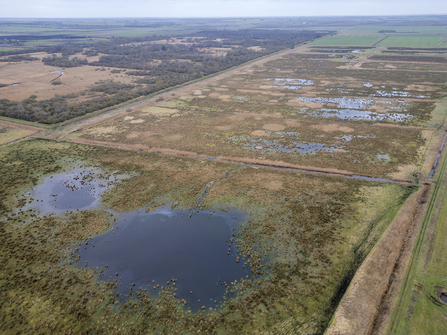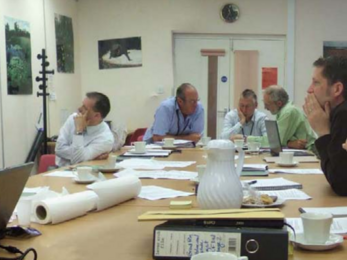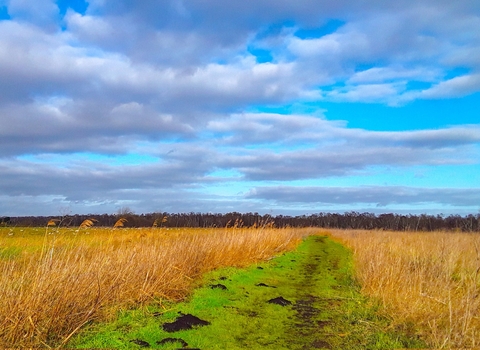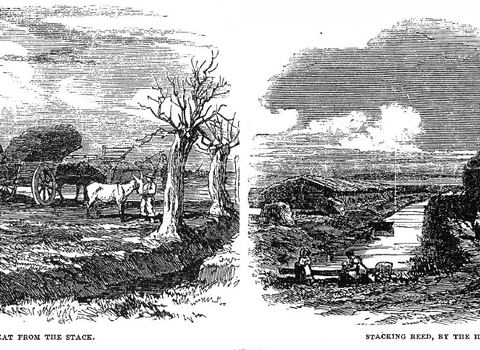I had moved up from Sussex where I was in charge of these little fragments of chalk grassland National Nature Reserves. People like (pioneering ecologist) Miriam Rothschild were saying we needed to join these areas up because the way we were doing conservation, at these isolated fragments like the chalk grasslands but also in fenland like Woodwalton Fen and Holme Fen, clearly wasn't working. In the late '90s I published a paper looking at the idea and potential impact of linking Woodwalton Fen and Holme Fen and some of the land around it. Soon after, at our first meeting in 2001, the Great Fen idea was born.
25 Years of the Great Fen from Alan Bowley
Alan Bowley and other Great Fen partners accompany HRH King Charles III, in his former role as the Prince of Wales, on a tour of Woodwalton Fen NNR.
The whole idea was ridiculous to some people, but others recognised it as a completely new way of healing and creating new ecosystems; moving away from micro-management and letting nature take charge. There was opposition, but also support, not only from some more enlightened farmers, but also Huntingdon District Council saw it as an opportunity to regenerate the fens and create employment. And in order to achieve it you really had to involve the Middle Level Commissioners drainage authority because they knew about water and what was needed to solve drainage and flooding problems. So the partnership came together.
The launch of the Great Fen Masterplan in 2010
It was such an exciting time. It was life changing for me. I was working with a whole range of wonderful people and there was such a ‘can do’ attitude.
From each organisation we had their best people - people who others would listen to. Then we had a visit from John Gummer, then Secretary of State for the Environment, who agreed this was a great idea, and more wonderful people like Baroness Barbara Young who supported it early on, becoming Chair of the campaign - and when you have people like that involved, things really start to happen.
But it was still just an idea. A successful bid to the National Lottery Heritage Fund to acquire Darlow's Farm was absolutely key and that showed we were putting our money where our mouth was. The time since has also proven the value in what we proposed, with this area becoming an incredible asset for the wildlife desperate to spread from the isolation of Woodwalton Fen.

Landscape restoration at work on Darlow's Farm as fields become wetland habitat. Credit: Holly Wilkinson
I learnt a lot. People would always talk about how the Fens ‘used to be’ but in reality they were always changing and that is why the Great Fen is about looking forward, working with what we have, rather than trying to re-create something from the past. The current nature reserves and drained land are like pieces of a puzzle that have been thrown up in the air and the pieces are all over the place.
That was why, when I was asked to write an account of why and how it all happened (‘The Great Fen - a Journey through Time’), I traced the long history of humans and nature through the many changing faces of the fens – for me, it was essential to understand how we had arrived at the situation today in order to set the context for deciding how we can nurture this landscape into the future.
I remember someone saying, any fool can appreciate the mountains, but it takes discernment to appreciate the Fens. I certainly grew to love them and hope many others will too.
The Great Fen Book by Alan Bowley
Alan knows the Great Fen so well, he wrote the book on it!





